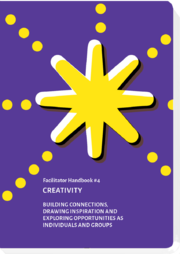Goals
- Familiarizing oneself with different perspectives on the same issue
- Gaining patience and developing our self-understanding
- Achieving a larger and more complex picture of the issue.
Steps
1. Ask the participant to identify three people in his/her life that have a positive and supportive attitude towards them (person A, B, and C).
2. Ask the participant to change their perspective and think as person A would.
- What advice person A would give you about the decision in general?
- What would person A’s arguments be?
3. While the participant answers the questions as person A, the facilitator writes down the answers (it is best to use colored cards, yellow cards for question 2.1, green cards for question 2.2) After the participant has finished, ask about the advice and arguments person B and person C would give, again making notes on colored cards.
Reflection
After exploring all the advice and arguments, take a closer look at the colored cards, putting them on a pin board if you have one. Divide the cards into two categories, putting the advice in one column and the arguments in a second. If there are subgroups of arguments and advice, it may be helpful to cluster them in groups. Now take a closer look at them.
When asking these questions, remain non-judgmental and impartial. Questions may include:
- How do you see the decision making process now?
- What do you think about the advice? How can these individuals' opinions help you?
- What do you think about the arguments? Which of them make sense to you? Which are helpful?
- What new insights did you gain?
Reference
Inspired by: Sabine Prohaska: Coaching in der Praxis, 2013
Handbook for Facilitators: Creativity Handbook
This text was published in: N. Zimmermann (ed.), E. Leondieva (ed.), M. Gawinek-Dagargulia (ed.) (2018). Creativity Handbook. Building connections, drawing inspirations & exploring opportunities as individuals & groups.Competendo Handbook for Facilitators.

Elke Heublein
Co-founder of Working Between Cultures. Co-author of Holistic learning. Facilitator since 2004, certified intercultural facilitator (Institute for Intercultural Communikation, LMU München) and trainer (IHK Akademie München/Westerham), adult education (Foundation University Hildesheim). Focus: Cooperation and leadership in heterogenouos teams, higher education, train-the-trainer.
Experiences
Usually this exercise helps people to see a problem in a new light.
Throughout this process, it is important that the participant is the one who evaluates.






